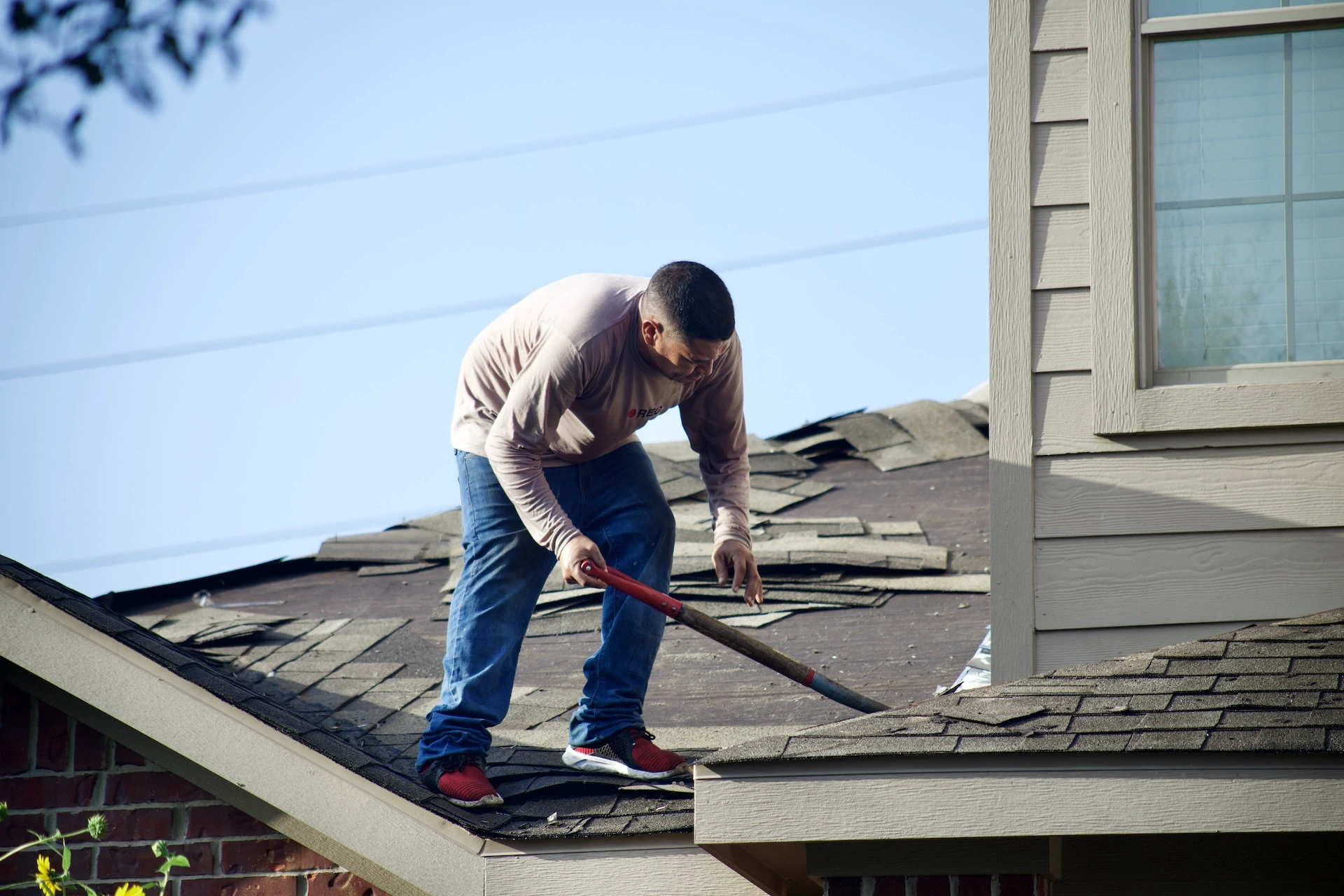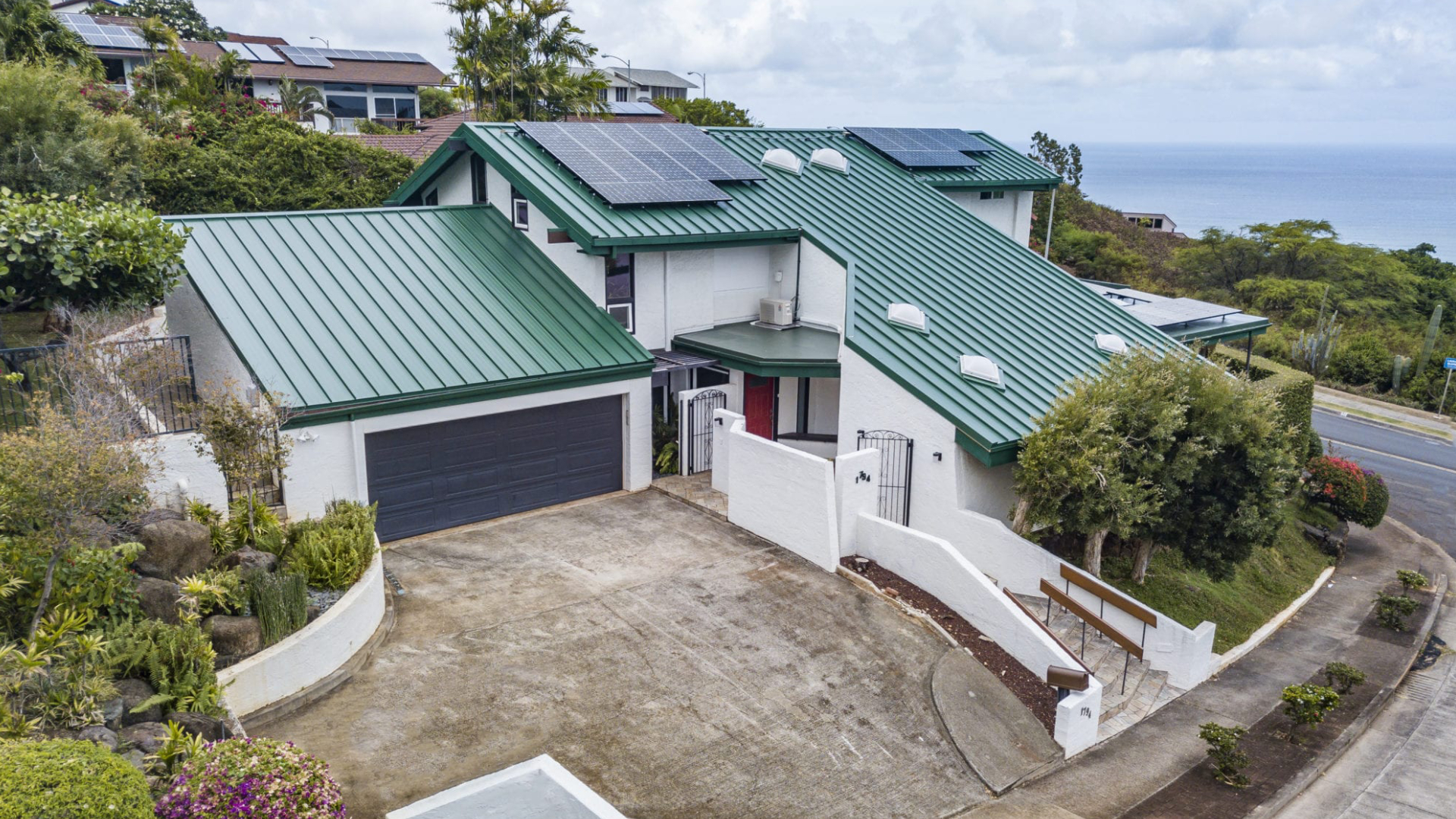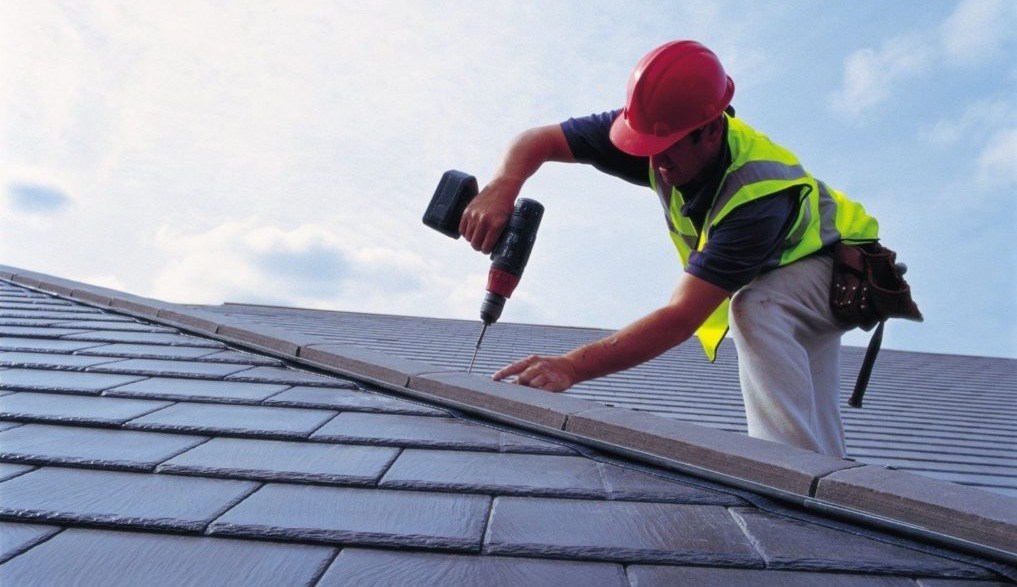Modern construction require advanced roofing materials hawaii to meet energy goals.
Modern construction require advanced roofing materials hawaii to meet energy goals.
Blog Article
Discover Usual Roof Covering Issues and Just How to Address Them Successfully
When it concerns your roofing system, spotting problems early can conserve you money and time. You might see water spots on your ceiling or split roof shingles throughout your regular checks. Disregarding these signs can cause bigger problems down the line. Recognizing exactly how to identify and attend to these usual roofing problems is vital for maintaining your home's honesty. Yet what details steps should you take to ensure your roofing remains in top problem?
Determining Roof Covering Leaks and Their Causes

Next, analyze your roofing from the outside. Seek missing out on or cracked floor tiles, rusted blinking, or harmed rain gutters. Take notice of areas around chimneys, vents, and skylights, as these are common leak sources. If you identify any one of these concerns, it's important to resolve them immediately.
During hefty rain, observe your roofing for any merging water or drips. This can disclose leakages that might not show up during dry problems. By remaining cautious and frequently checking your roof, you can catch leakages early and secure your home from additional damages.
Handling Missing Out On or Damaged Shingles
When you observe missing out on or harmed roof shingles, it's necessary to act promptly to avoid additional concerns. You'll wish to determine the degree of the damages, fix any type of missing out on roof shingles, and think about precautionary upkeep tips to keep your roof in top shape. Taking these steps can save you time and money in the future.
Identifying Tile Damages
Although roof shingles are made to stand up to the elements, they can still suffer damage over time, bring about potential leakages and costly repair services. To identify roof shingles damages, start by examining your roofing system for missing out on, broken, or curled roof shingles. Look for indications of staining or granule loss, which can indicate damage. Take notice of any type of locations where tiles are lifting or twisting, as these can produce vulnerabilities. It's additionally important to look for water stains or mold on your ceilings and walls, as these might signify leakages originating from harmed shingles. Regularly checking your roof, especially after serious weather, can aid you capture problems early and keep the stability of your home.
Repairing Missing Out On Shingles
After identifying roof shingles damages, the following action is resolving any type of missing out on or harmed tiles without delay to stop additional problems. Beginning by evaluating the afflicted location and determining the amount of tiles need replacement. If you can, climb up onto your roofing system safely, using suitable gear. Eliminate any kind of broken tiles carefully making use of a pry bar. As soon as you have actually gotten rid of the location, slide in the brand-new tiles, ensuring they line up with the existing ones. Safeguard them with roof nails and apply roof covering adhesive for included stability. Do not forget to secure the edges to prevent water seepage. If you're awkward with the repair, it's wise to call a professional. Taking activity promptly will assist keep your roof's stability and prolong its life expectancy.
Preventive Maintenance Tips
Just how can you maintain your roof in leading form and prevent shingles from going missing out on or obtaining damaged? Routine assessments are essential. Examine your roofing system at the very least twice a year and after extreme climate. Search for indicators of wear, such as curling, cracking, or loosened tiles.
Maintain rain gutters clean and totally free of particles to guarantee appropriate water circulation and prevent tile damages. Cut overhanging branches to reduce the danger of them scuffing against your roofing during storms.
Take into consideration applying a protective sealant to extend your tiles' lifespan. Finally, if you discover any kind of concerns, address them quickly to prevent costly repairs later on. Taking these precautionary actions can save you money and time while ensuring your roofing continues to be sturdy and trustworthy.
Comprehending Roofing System Air Flow Issues
Proper roofing air flow is necessary for preserving the longevity and effectiveness of your roof, as it assists manage temperature level and moisture levels in your attic room. Without adequate ventilation, you might deal with issues like too much warm accumulation, causing early tile damage, or increased humidity that can create mold and mildew growth and wood rot.
To assess your roof air flow, look for indications of getting too hot, such as distorted shingles or a warm attic room. Try to find obstructed vents, which can restrict airflow and trap warm. You ought to ensure your intake and exhaust vents are balanced, permitting correct air exchange.
If you think ventilation troubles, think about installing added vents or updating existing ones. Ridge vents, soffit vents, and gable vents can all improve air movement. Dealing with these issues quickly can protect your roof and save you from costly repair services down the line. Keep aggressive in maintaining your roofing's ventilation to secure your home.
Resolving Roofing Moss and Algae Development
While you could appreciate the all-natural look of moss and algae on your roof covering, these microorganisms can lead to substantial troubles if left untreated. Utilize a soft-bristle brush to the original source carefully scrub away the moss and algae, being careful not to harm your shingles.
Following, consider using a specialized roof cleaner or a mix of water and bleach to eliminate staying spores. Wash thoroughly to prevent any kind of chemical damage. In addition, install zinc or copper strips along the ridge of your roof. As rainfall washes over these steels, it develops a protective barrier versus future development. Normal assessments and upkeep will certainly help avoid moss and algae from returning, guaranteeing your roofing remains healthy for years ahead.
Repairing Storm Damages and Wind Issues
After a tornado, it's important to examine your roof for damage triggered by high winds and heavy rainfall. Beginning by examining for missing out on or damaged roof shingles, as these are common casualties.
Search for any type of drooping locations, which might show water build-up or architectural issues. If you locate any type of particles, like branches or leaves, eliminate them very carefully to prevent further damage. If your seamless gutters are obstructed, clear them to guarantee appropriate water drainage.

For small repair services, you may handle it on your own, but do not be reluctant to call a professional for comprehensive damage. Keep in mind, acting swiftly can conserve you from larger issues down the line, so take that evaluation seriously and resolve any kind of concerns as quickly as feasible.
Acknowledging Indications of Structural Damages
Exactly how can you tell if your roof covering is dealing with structural damage? Beginning by seeking visible sagging or dips in your roofline. These indications indicate that the underlying framework may be jeopardized. Next, look for fractures or spaces in the walls or ceiling, as these can signify moving or settling because of roof problems. Focus on leakages or water spots, especially in locations where the roofing satisfies wall surfaces. If you observe missing out on or broken roof shingles, it's important to resolve them news quickly, as they can expose your roofing to more damages. Check your attic for any signs of daytime glancing with, which can mean your roofing system's stability is at risk. Listen for unusual creaking or popping noises, as they may suggest structural tension. If you notice any of these indicators, it's time to consult a roof covering specialist for an extensive analysis.
Regular Upkeep Tips for Long Life

Regular Evaluations Relevance
Given that a roofing system is your home's first line of defense against the components, routine inspections are essential for preserving its integrity. You must examine your roofing system at least two times a year, ideally in springtime and fall, to capture potential issues early. Keeping up with these examinations can stop costly repairs down the line and extend your roofing's life-span, ensuring your home remains risk-free and audio for years to come.
Correct Seamless Gutter Upkeep
Routine roofing inspections normally lead to the value of appropriate seamless gutter upkeep. Inspect your rain gutters for leakages or corrosion; they can cause water damage to your roof covering and home. By adhering to these tips, you'll extend your gutters' lifespan and secure your roofing.
Regularly Asked Questions
Exactly How Can I Select the Right Roof Covering Material for My Home?
To pick the ideal roof covering material for your home, consider environment, longevity, and aesthetic appeals. Research choices like asphalt tiles, steel, or tile. Think concerning maintenance needs and budget plan to locate what matches you ideal.
What Are the Indicators I Required a Roofing System Replacement As Opposed To Repair Service?
If you discover extensive leakages, drooping, or missing roof shingles, you might require a roof substitute. If your roofing's nearing its life expectancy or has substantial damage, it's time to consider a full replacement instead of just repair work.
How Commonly Should I Arrange Expert Roofing System Assessments?
You must set up specialist roof covering examinations at the very least yearly, ideally in spring or fall. This aids catch prospective issues early, guaranteeing your roofing stays in excellent condition and extending its life-span.
Can I Set Up a New Roof Over My Old One?
You can mount a new roofing system over your old one, however it's necessary to inspect local structure codes and ensure the existing roof's condition is audio. This approach can conserve money and time, however think about possible problems.
What Is the Ordinary Life Expectancy of Various Roof Covering Products?
The average life-span varies by material: asphalt roof shingles last 15-30 years, steel roofs can last 40-70 years, while floor tile or slate roof coverings may exceed 50 years. Choose sensibly based upon your environment and budget.
Verdict
By staying attentive and resolving common roof covering issues without delay, you can safeguard your home and prolong your roof covering's life-span. Consistently examine for leaks, harmed roof shingles, and ventilation concerns, and tackle moss or algae growth before it gets worse - roofing companies honolulu. After storms, look for any type of damage and make needed repairs. With a little routine upkeep, you'll not only secure your investment yet also take pleasure in satisfaction knowing your roof covering remains in leading form. Do not wait-- act currently!
Report this page